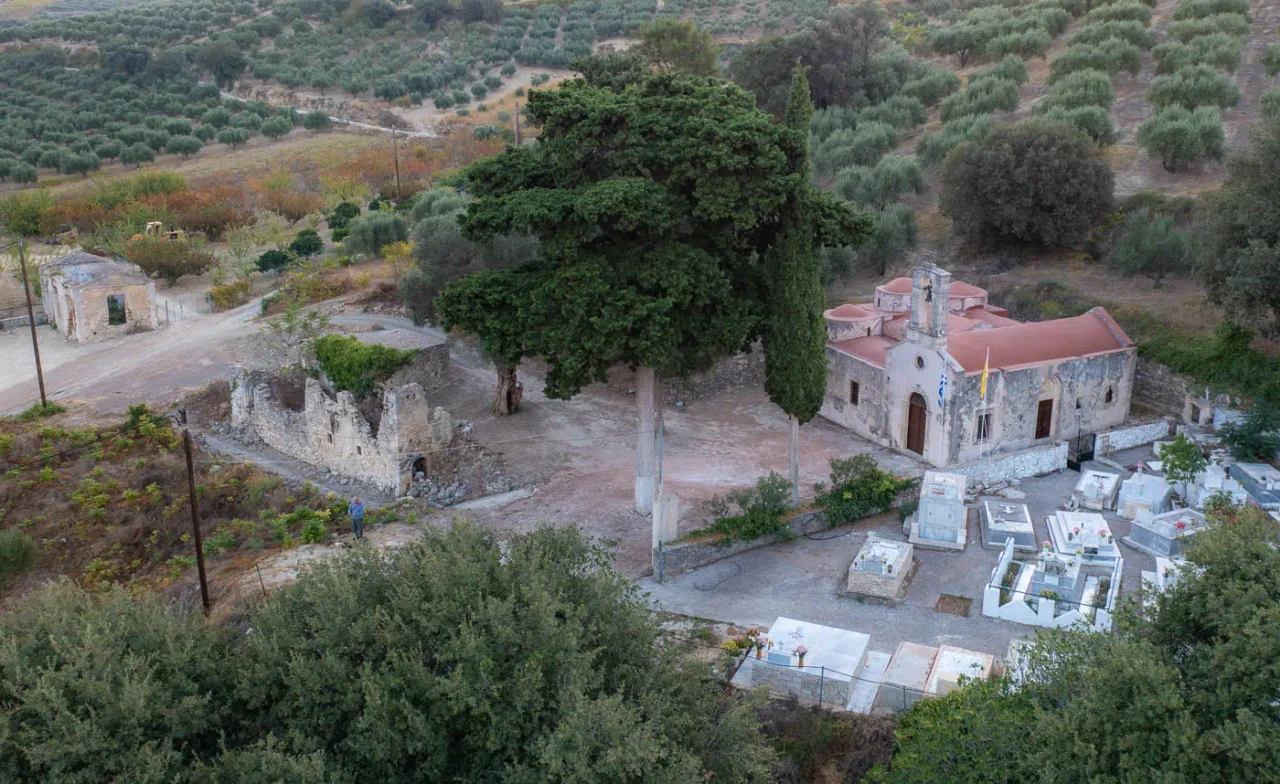
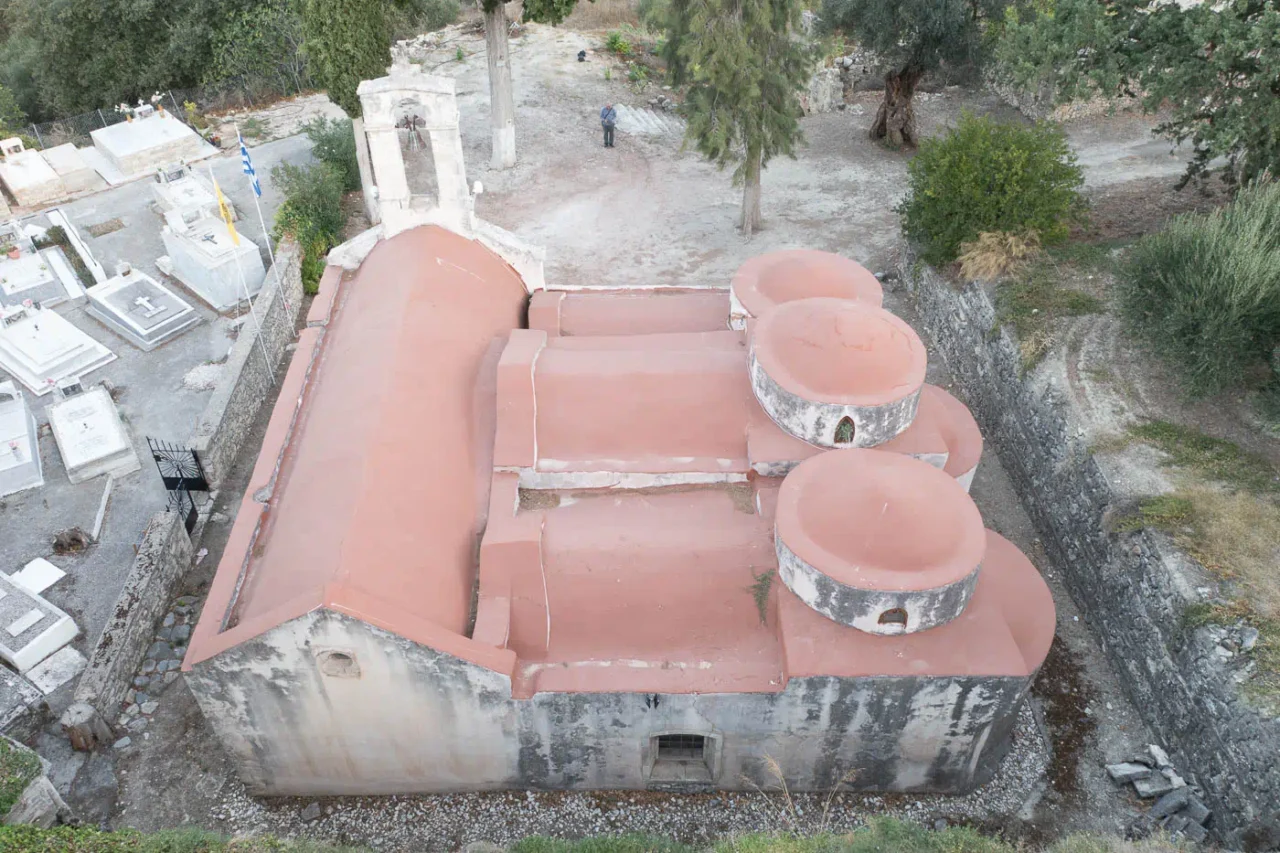
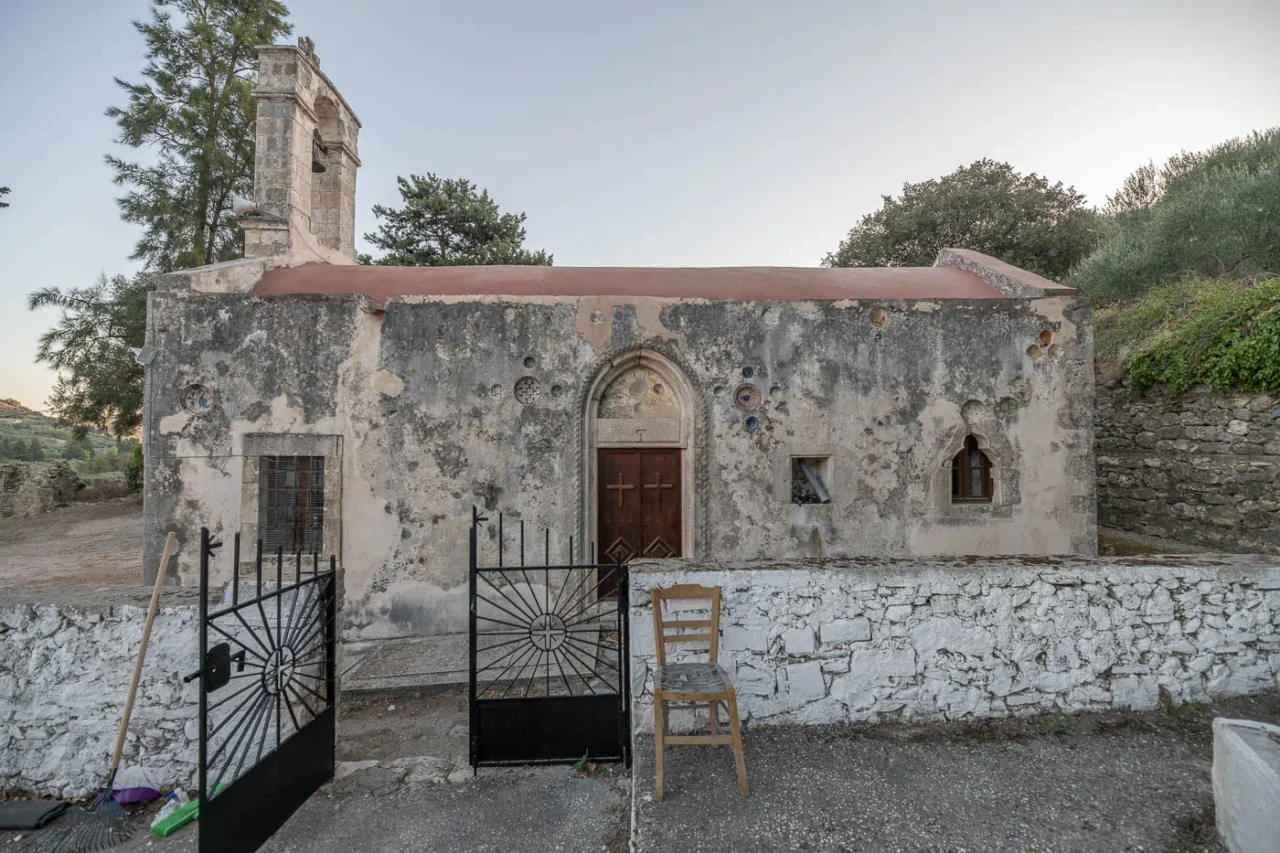
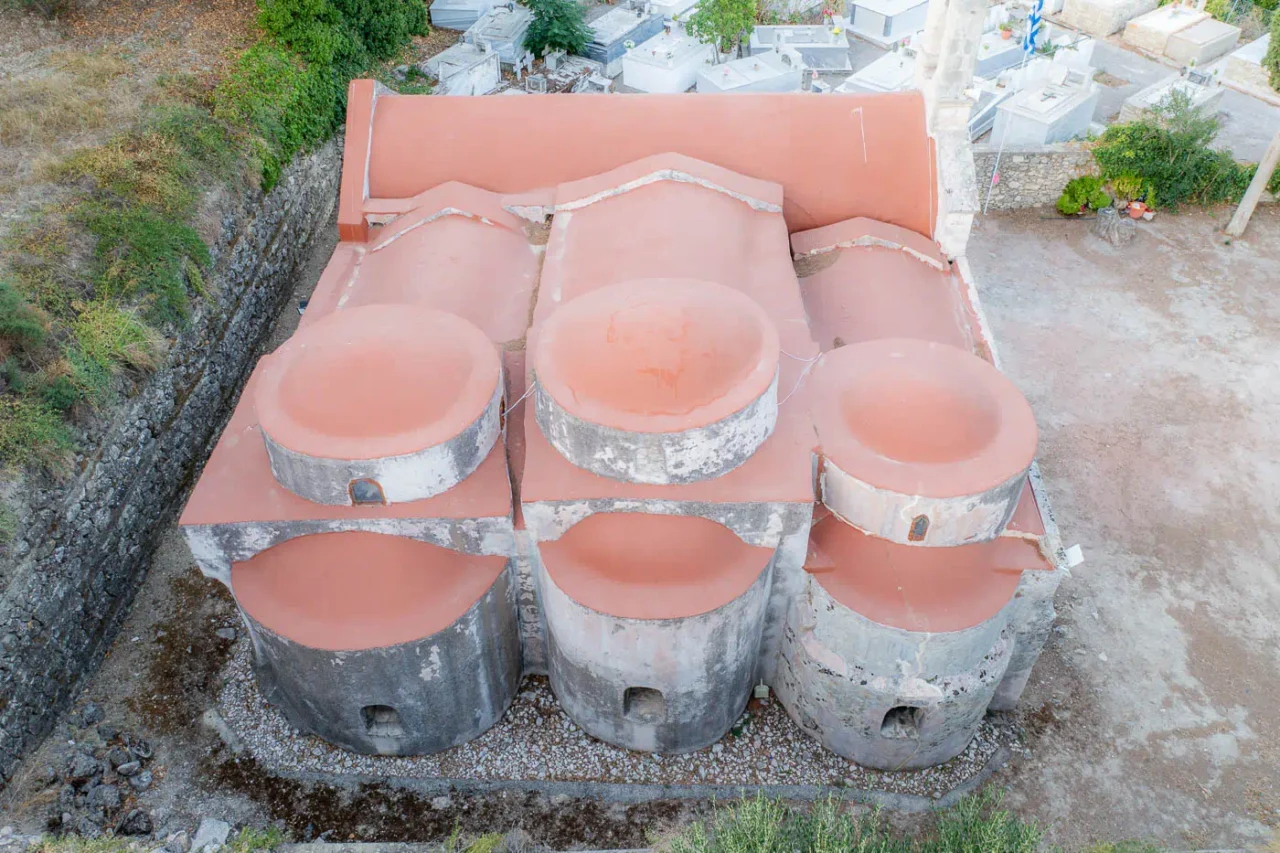
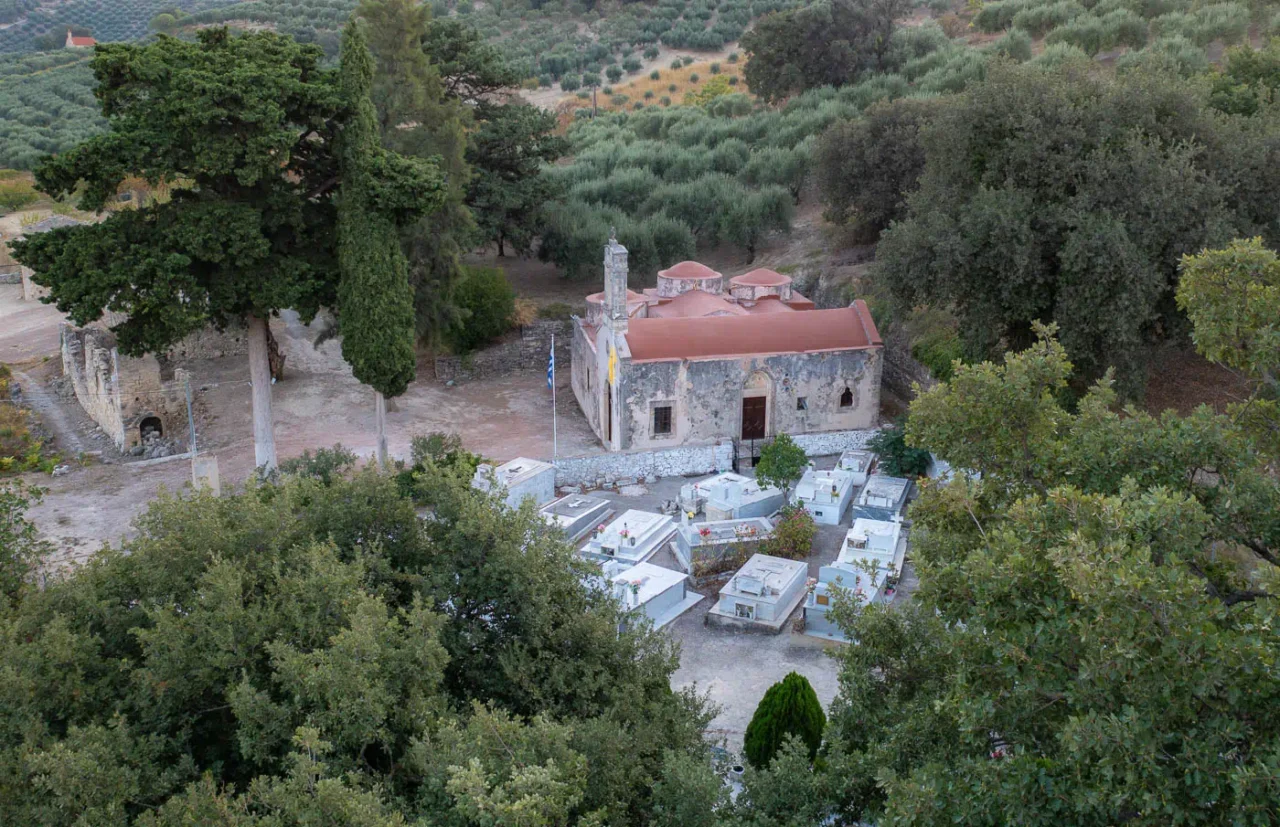
Panagia Kera Eleoussa (Church of Our Lady of Mercy) in Kitharida, near Heraklion, Crete, is a striking example of Byzantine ecclesiastical architecture. The church, currently serving as the village cemetery, was once the katholikon (main church) of the monastery of Panagia Eleoussa, a monastery for monks. Records indicate the monastery’s operation throughout the Venetian and Ottoman periods until its abandonment in the late 19th century. Today, the katholikon, a few ruined cells, and the roofless school, which functioned as a mutual teaching school from 1841 to 1866, remain.
The church comprises three aisles dedicated to Agios Charalampos, the Dormition of the Theotokos, and Agios Fanourios, with a narthex (entrance hall) added to the front of the sanctuary, possibly in the 12th or 13th century. A significant intervention in the 15th century involved the reconstruction of the central, eastern, and transverse aisles. Each aisle is topped with a dome, a rare feature, especially the dome over the sanctuary. The orientation of the apses, facing north instead of east, is likely due to a pre-existing structure.
Inside, fragments of wall paintings survive. The church’s exterior is adorned with circular plaques featuring unique paintings, mainly of birds. A notable Spanish plaque from the early 15th century bears the inscription “Ave Maria gratia plena,” the beginning of the most common Latin prayer to the Virgin Mary.
An illustrated Gospel from the Sinai Monastery dated 1175 mentions the reconstruction of Kera Eleoussa on the site of ruined buildings. However, identifying this reference with the Kitharida monastery is uncertain, as other monasteries with the same name existed in the Heraklion area. In 1822, the monks were killed by the Ottomans, the monastery was looted, and its rich library was burned, but it was quickly rebuilt. It even came under the jurisdiction of the Monastery of Agia Eirini in Kroussonas, which was also destroyed in 1822.
- Construction Period: 11th century (original construction), with significant renovations and additions in the 12th-13th centuries (narthex) and 15th century (reconstruction of aisles and domes).
- Location: Kitharida, near Heraklion, Crete.
- Historical Significance: Served as the katholikon of the Panagia Eleoussa monastery, operational during Venetian and Ottoman rule, and later a mutual teaching school.
- Current Status: The katholikon, ruined cells, and the roofless school building remain. The church is currently used as the village cemetery.
Access
Just a few meters of an earth road in a very good condition. The church is usually locked but the surroundings are accessible and open to the public.













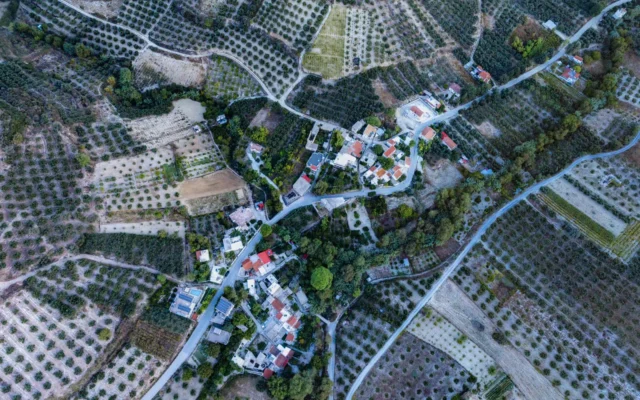



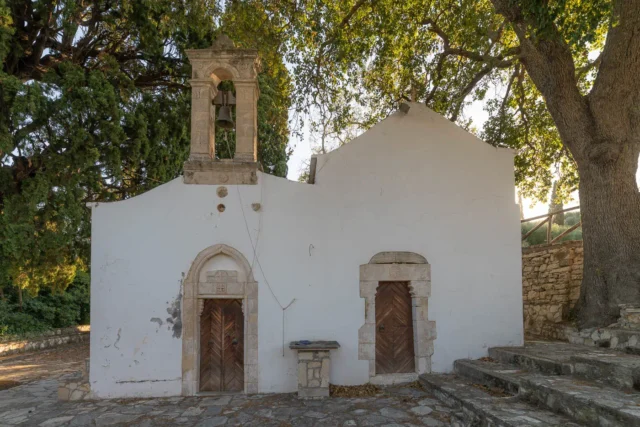


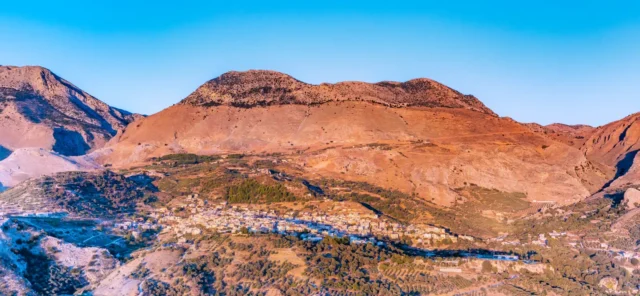

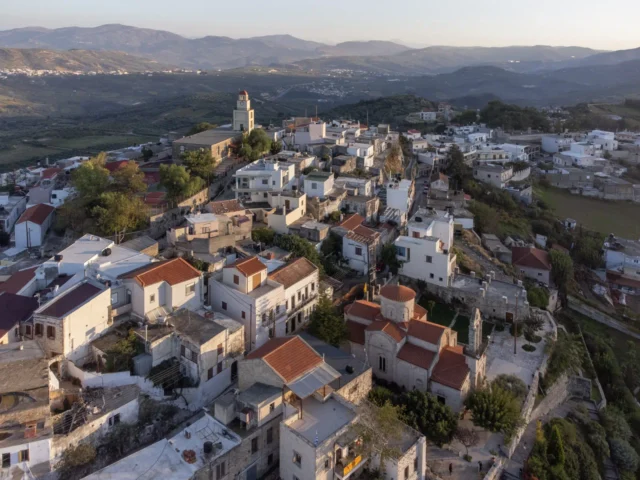

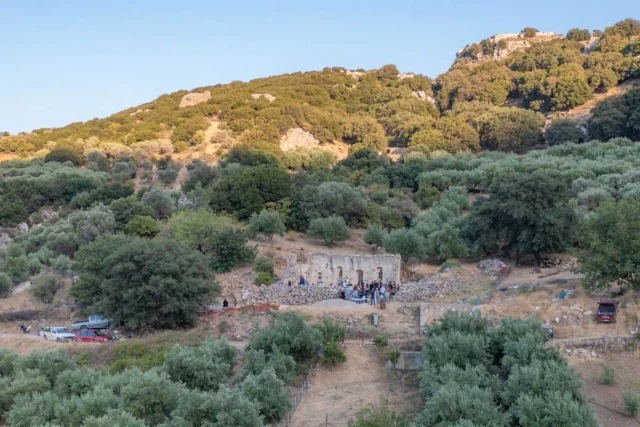

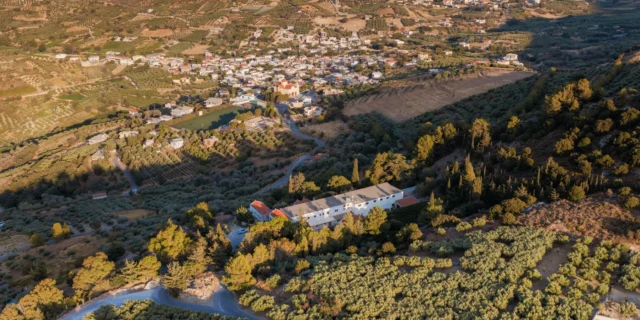
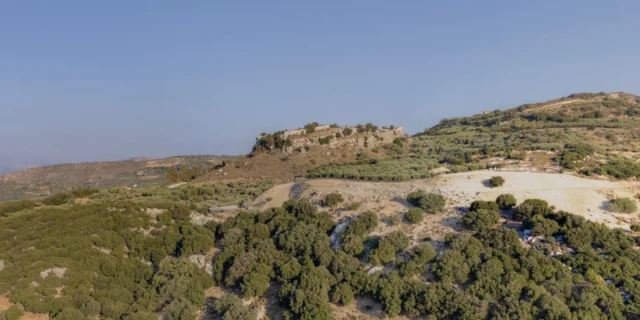
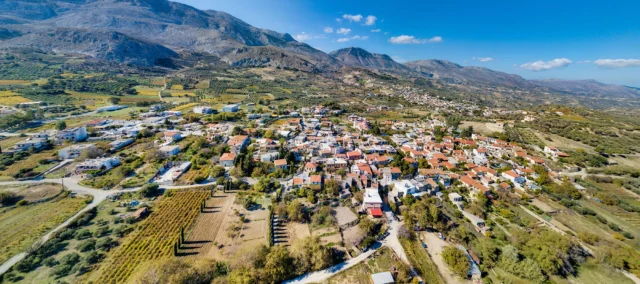
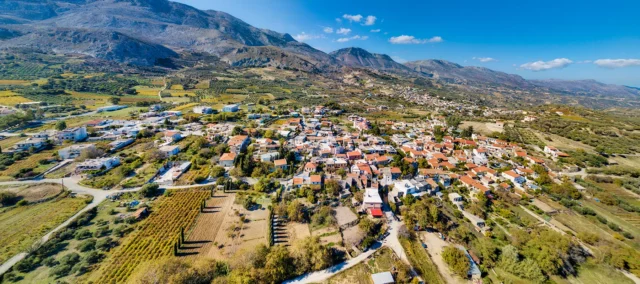
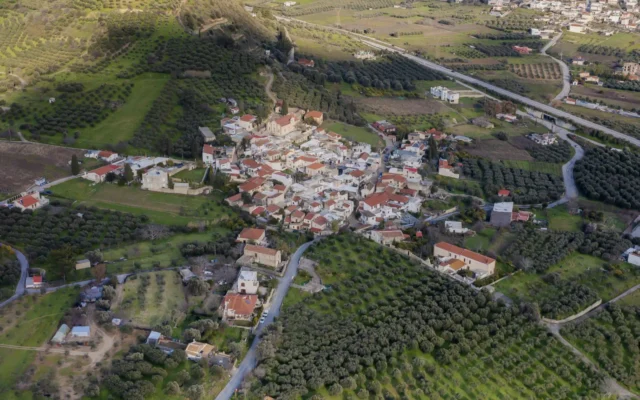

There are no comments yet.